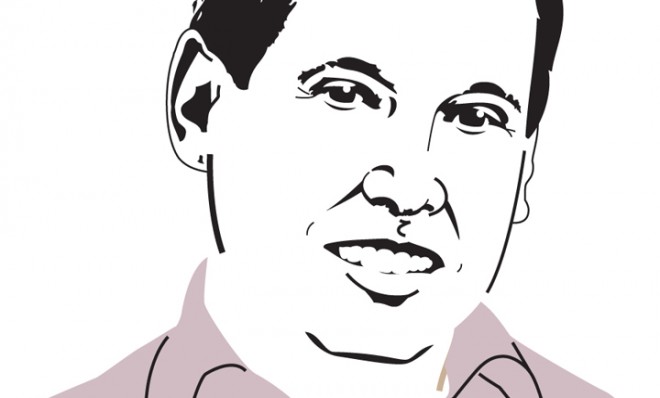5 things to be hopeful for in 2013
The federal government's debt may be ballooning. But the personal debt of U.S. households is actually shrinking


On New Year's Eve, I alerted you to "5 disturbing trends to watch in 2013." It's a gloomy assortment of troubles, to be sure, and because of their slow-moving speed and complexity, they often get underreported — or ignored altogether — by our mainstream media. That's not to suggest that all is gloom and doom, of course. Also beneath the media radar are many things we can cheer. From a long, rosy list, here are five things to be hopeful about:
1. We're winning the war on heart disease and cancer
Slowly but surely, we are beating these killers. Mortality rates from heart disease were down 68.3 percent between 1975 and 2008, while cancer death rates were down 11.7 percent over the same period. Why the discrepancy? Heart disease can be rather straightforward, at least when compared with the many types of cancer, which require different types of drugs and treatments. Even so, the number of American men dying from cancer is dropping by about 1.8 percent a year, and 1.4 percent for women. The drop in death rates is even more pronounced for black and Hispanic men — evidence that long-term efforts to improve cancer awareness, screening, and treatment are paying off. But more needs to be done: While falling death rates are steady for the "big four" cancers — lung, colon, breast, and prostate — there is evidence, the American Cancer Society says, that cancers are increasing among less-common forms such as pancreas, liver, thyroid, and kidney. Also growing: Melanomas.
The Week
Escape your echo chamber. Get the facts behind the news, plus analysis from multiple perspectives.

Sign up for The Week's Free Newsletters
From our morning news briefing to a weekly Good News Newsletter, get the best of The Week delivered directly to your inbox.
From our morning news briefing to a weekly Good News Newsletter, get the best of The Week delivered directly to your inbox.
2. Energy independence is actually possible
Every president since Richard Nixon has talked of an energy-independent America. That's all it has ever been — talk. But now, in case you haven't noticed, several big trends are occurring simultaneously which, together, are bringing us closer to making energy independence a reality.
First: We're importing less oil — a lot less. Since peaking in 2005 at 60 percent, our dependence on foreign suppliers has slid to 42 percent. Second, production here at home is booming. The largest driver of this has been the new (and environmentally controversial) technology of hydraulic fracturing ("fracking"), which allows producers to tap huge reservoirs of oil and natural gas in shale rock formations beneath dozens of states. Geologists say there could be more than 1 trillion barrels of oil in these deposits — four times the proven reserves of Saudi Arabia. In fact, predicts the International Energy Agency, the U.S. is on track to become the world's largest oil producer just seven years from now. The implications for our economy and national security are profound.
That's not all. Natural gas prices have plunged and are now competitive with coal. As electric utilities switched from coal to natural gas (which emits half the carbon dioxide), CO2 emissions fell in 2012 to their lowest levels in 20 years.
A free daily email with the biggest news stories of the day – and the best features from TheWeek.com
Also changing the dynamic: Tougher fuel efficiency standards for cars, which are reducing energy demand. The average car and truck will be required to get 54 miles per gallon by 2025, saving drivers thousands of dollars over the life of any new vehicle.
Finally, renewable energy (which is not without environmental concerns either) continues to grow, and now accounts for 13 percent of all U.S. electricity.
3. We're enjoying a manufacturing renaissance
Low-skill, low-pay manufacturing jobs are gone and aren't coming back. But high-skill, high-pay jobs are growing, as America's manufacturing industry moves up the value chain. The National Association of Manufacturers estimates that there are some 600,000 openings right now — for those with the right set of skills and education. Many of these jobs require strong STEM training (Science, Technology, Engineering, and Math). Have this background? Congratulations: You'll make $500,000 more over the course of your career than someone who doesn't.
Some of this revival is linked to developments elsewhere — rising labor costs in China, for example — but many are homegrown. The steady decline in the dollar (which makes our exports much more competitive around the world), cheaper energy costs, intellectual property safeguards, and a resilient, mobile workforce, are among the reasons why more goods — and goods of higher economic value — are being made here.
Also important: Foreigners, eager to lower their own costs and be close to key U.S. markets, are pouring in capital: $91 billion in 2011, the highest since the global recession hit in the last decade. That other nations are investing here is a sign of confidence in America, and while there are some who resent or fear foreign investment (hardly a new phenomenon), we should, in fact, welcome it. Investment capital is agnostic: It flows to the best opportunities regardless of where they are. America must continue to be among the destinations of choice for foreign investors.
4. We're safer
Mass shootings like the Sandy Hook tragedy get lots of attention (as they should), but much less attention is given to the broader long-term trend: Crime rates are falling steadily in the United States. The FBI reported in October that violent crime — murder, rape, robbery — fell 3.8 percent in 2011, the fifth consecutive annual drop. Property crimes hit a nine-year low.
What's behind the steady drop? Criminologists point to several factors, including higher rates of incarceration and better use of data and technology — such as a lot more surveillance cameras. It also doesn't hurt that the population is aging. Violent crime tends to be committed by people who are younger.
5. We're climbing out of debt
No, not the federal government — which has now hit its latest debt ceiling of $16.4 trillion — but us. The amount of debt Americans carry — mortgages, student loans, credit cards, etc. — now stands at $11.3 trillion. An astronomical amount for sure, but that's down from $12.7 trillion back in 2008. The Federal Reserve's household "debt service ratio" (the ratio of debt payments to disposable personal income) fell to 10.61 percent in the third quarter of 2012, the lowest since 1983.
This is very good news. Not owing anyone a nickel is the ultimate freedom, so good for you. But there is a downside to your penny pinching: The economy at large is heavily dependent on consumer spending. So the more you save, the more you pay down debt translates into fewer vacations, new clothes, and dining out. Which in turn threatens the jobs of others. But the economy can take care of itself — your job is to improve your own finances. As I pointed out in my last article, most Americans have precious little stashed away for their golden years. Keep saving, folks.
An award-winning member of the White House press corps, Paul Brandus founded WestWingReports.com (@WestWingReport) and provides reports for media outlets around the United States and overseas. His career spans network television, Wall Street, and several years as a foreign correspondent based in Moscow, where he covered the collapse of the Soviet Union for NBC Radio and the award-winning business and economics program Marketplace. He has traveled to 53 countries on five continents and has reported from, among other places, Iraq, Chechnya, China, and Guantanamo Bay, Cuba.
-
 Mixed nuts: RFK Jr.’s new nutrition guidelines receive uneven reviews
Mixed nuts: RFK Jr.’s new nutrition guidelines receive uneven reviewsTalking Points The guidelines emphasize red meat and full-fat dairy
-
 Will regulators put a stop to Grok’s deepfake porn images of real people?
Will regulators put a stop to Grok’s deepfake porn images of real people?Today’s Big Question Users command AI chatbot to undress pictures of women and children
-
 ‘All of these elements push survivors into silence’
‘All of these elements push survivors into silence’Instant Opinion Opinion, comment and editorials of the day
-
 The billionaires’ wealth tax: a catastrophe for California?
The billionaires’ wealth tax: a catastrophe for California?Talking Point Peter Thiel and Larry Page preparing to change state residency
-
 Bari Weiss’ ‘60 Minutes’ scandal is about more than one report
Bari Weiss’ ‘60 Minutes’ scandal is about more than one reportIN THE SPOTLIGHT By blocking an approved segment on a controversial prison holding US deportees in El Salvador, the editor-in-chief of CBS News has become the main story
-
 Has Zohran Mamdani shown the Democrats how to win again?
Has Zohran Mamdani shown the Democrats how to win again?Today’s Big Question New York City mayoral election touted as victory for left-wing populists but moderate centrist wins elsewhere present more complex path for Democratic Party
-
 Millions turn out for anti-Trump ‘No Kings’ rallies
Millions turn out for anti-Trump ‘No Kings’ ralliesSpeed Read An estimated 7 million people participated, 2 million more than at the first ‘No Kings’ protest in June
-
 Ghislaine Maxwell: angling for a Trump pardon
Ghislaine Maxwell: angling for a Trump pardonTalking Point Convicted sex trafficker's testimony could shed new light on president's links to Jeffrey Epstein
-
 The last words and final moments of 40 presidents
The last words and final moments of 40 presidentsThe Explainer Some are eloquent quotes worthy of the holders of the highest office in the nation, and others... aren't
-
 The JFK files: the truth at last?
The JFK files: the truth at last?In The Spotlight More than 64,000 previously classified documents relating the 1963 assassination of John F. Kennedy have been released by the Trump administration
-
 'Seriously, not literally': how should the world take Donald Trump?
'Seriously, not literally': how should the world take Donald Trump?Today's big question White House rhetoric and reality look likely to become increasingly blurred
